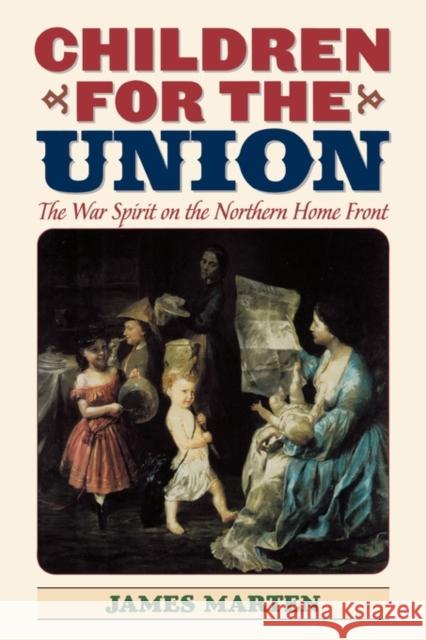Children for the Union: The War Spirit on the Northern Home Front » książka
Children for the Union: The War Spirit on the Northern Home Front
ISBN-13: 9781566635639 / Angielski / Twarda / 2004 / 209 str.
The Civil War influenced virtually every aspect of children's lives, and in turn they eagerly incorporated the experience of war into their daily assumptions and activities. In this new contribution to the American Childhoods series, James A. Marten places the experiences of children living in the North during the Civil War into the larger contexts of economic, political, and cultural developments during the nineteenth century. On the home front, children became almost full-fledged members of their communities in their support of the war effort. They left school to replace absent men on farms and in factories, helped raise funds for hospitals and other soldiers' causes, and volunteered to knit socks, pick lint, and perform other necessary duties. Even as families were torn apart by the war, Mr. Marten notes, family ties grew stronger as Union soldiers filled their letters with love and advice for their children. He shows how the war brought writers for children to challenge the pacifism reflected in antebellum literature and instead to promote controversial political viewpoints such as abolitionism and to support the Union's military action. Indeed, Northern children's lives were militarized as never before, from the toys and games and stories that were overwhelmed by images of warfare and pro-Union ideals to actual military service by under-age soldiers and drummer boys. Both heroes and casualties, drummer boys in fact became potent symbols of the Northern war effort and the subject of countless poems and articles, at least temporarily altering perceptions of proper roles for children and youth in American society. As adults looking back, Northern children saw the war as a great adventure or a turning point in their lives. Some mourned lost fathers or relatives; others mourned lost childhoods. Children for the Union opens a new window on the impact of the war and shows that the youngest Americans were inevitable and enthusiastic participants in the nation's worst crisis. Abundantly illustrated.











